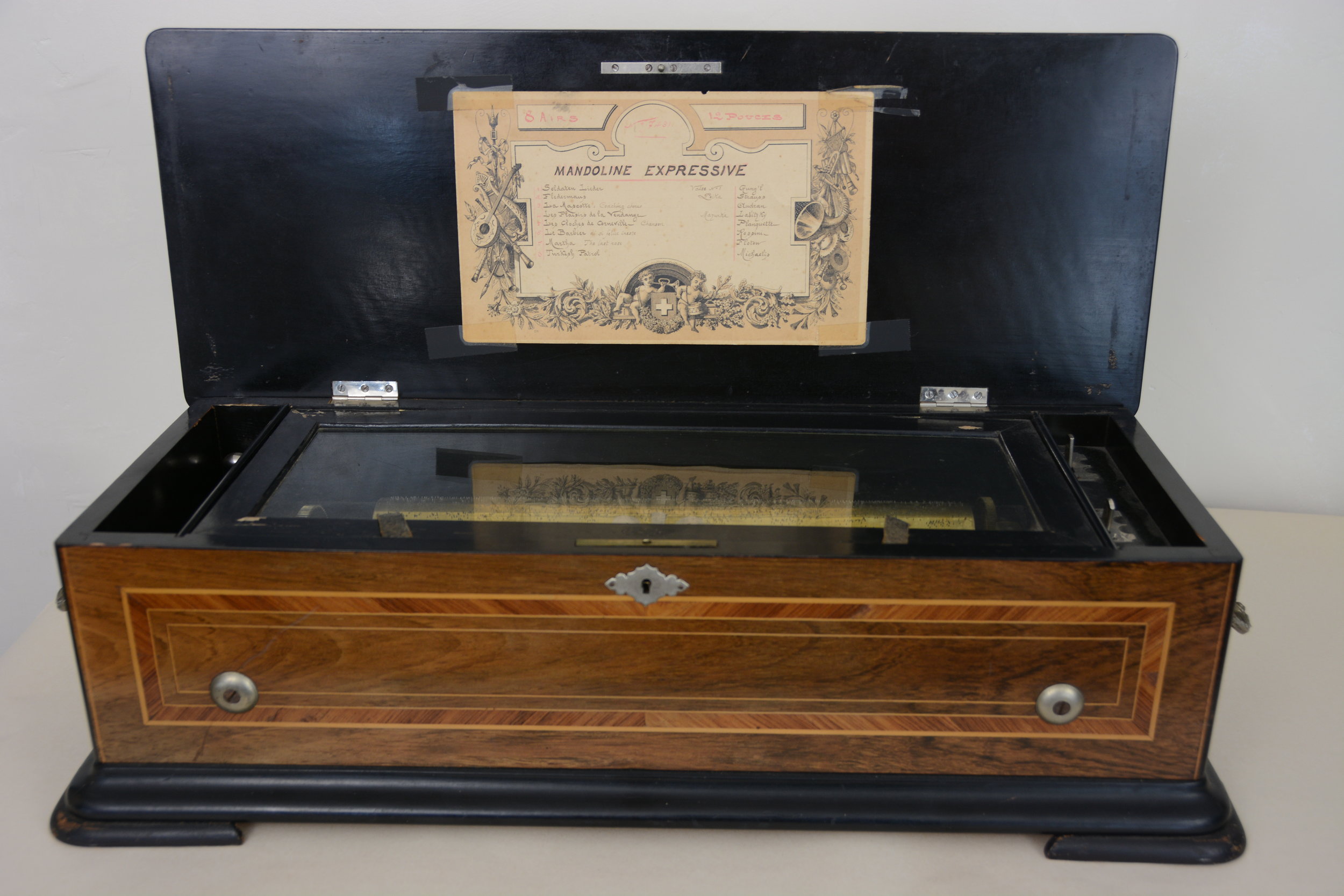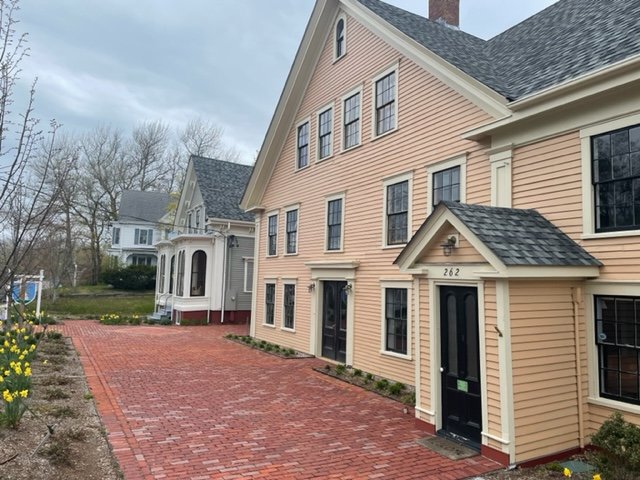Mandoline Expressive Musical Box,
Model 7437 Paillard, Vaucher & Fils, St. Croix Switzerland, c 1880 w1957.12
This beautiful music box was the wedding gift of Englishman, Carl Taylor, to his bride, Mabel Tubman, a Wellfleet native. At 38, Mabel was living with her parents before her 1919 wedding to Carl, 44. Carl was an engineer who came to Cape Cod with Marconi to establish the Wireless Station in South Wellfleet in 1903.
Carl donated this music box to the Historical Society in 1957, shortly after Mabel’s passing.
With a single winding, its spring-powered clockwork mechanism can play thirty minutes of eight different musical selections as pins on its slowly revolving brass cylinder strike tuned steel teeth that vibrate musically.
In the early 20th Century, music boxes were displaced by Thomas Edison’s phonograph but in their day music boxes were highly coveted.










